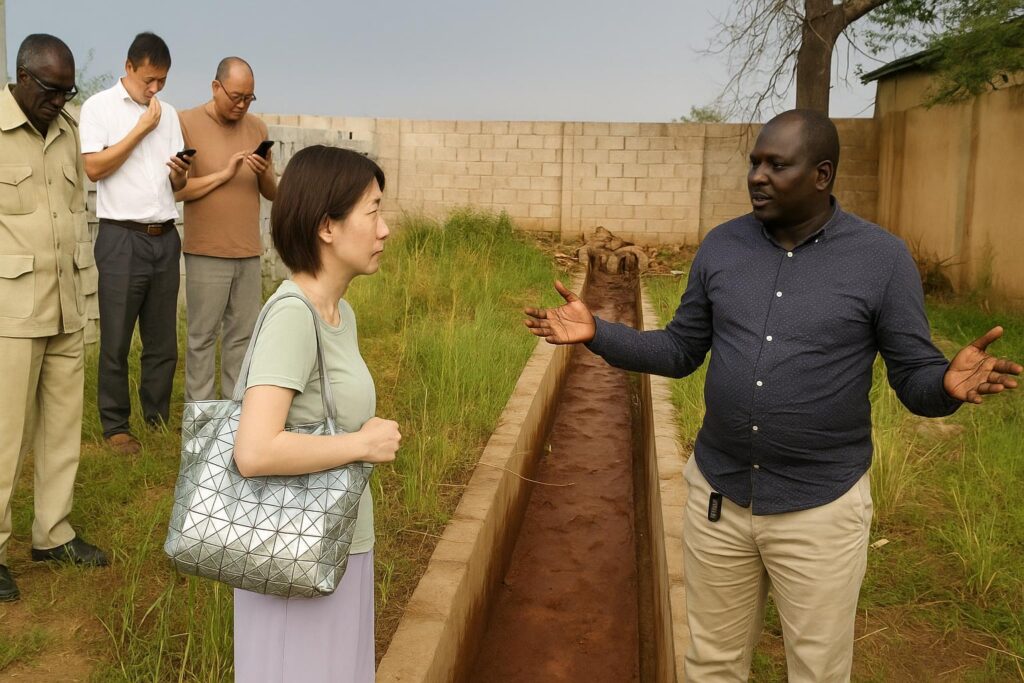Chinese CSR Investment in Gwudugge
When waters rose last month, residents watched anxiously. The new concrete channel, funded by Zhong Zhou International, held firm, guiding torrents away from homes. Embassy chargé d’Affaires Huo Ying called the performance “proof that targeted projects can change lives overnight.”
Ying told villagers that Chinese companies “value the neighbourhoods hosting our businesses.” She framed the six-month build as corporate social responsibility rather than charity, stressing long-term partnership between Juba County communities and Chinese investors.
Community Voices on Flood Relief
Community chairman Martin Sooka David recalled waist-deep floods that once stranded pupils and spoiled harvests. “We now cross the road in shoes, not bare feet,” he smiled, crediting the open drain for restoring everyday mobility.
Parents say school attendance rose as paths cleared, while market vendors reopened stalls previously shuttered by standing water. The sense of normalcy, they argue, is the project’s most valuable return.
Technical Details of the 300-Metre Drain
Deputy General Manager Wang Xianbin described a V-shaped concrete trench stretching more than 300 metres from the main Nesitu road to the Nile tributary. Earth-moving machines, hired labourers and locally sourced stone kept costs in the “thousands of dollars,” he said.
Engineers graded the slope to quicken flow while minimising erosion. Regular inspection points allow community teams to clear debris, ensuring the structure remains effective through heavy rains.
Regional Partnerships Strengthening Ties
Since independence, South Sudan has welcomed Chinese support in education, health and infrastructure. Observers note that the Gwudugge drain, though modest, reinforces diplomatic goodwill by addressing an everyday need rather than a high-profile landmark.
Local officials hinted at replicating the model in other flood-prone payams, citing reduced maintenance expenses compared with ad-hoc sandbag defences. Such rollouts could deepen South-South collaboration on climate adaptation.
Looking Ahead for Sustainable Resilience
Villagers plan to plant grasses along the channel’s banks to stabilise soil and add footbridges for easier crossing. Discussions are under way for rain-harvesting schemes that would turn excess water into irrigation during dry spells.
For Gwudugge, a single drain represents more than infrastructure; it signals a pathway from crisis response to proactive resilience, achieved through dialogue, shared resources and a widening circle of trust.


